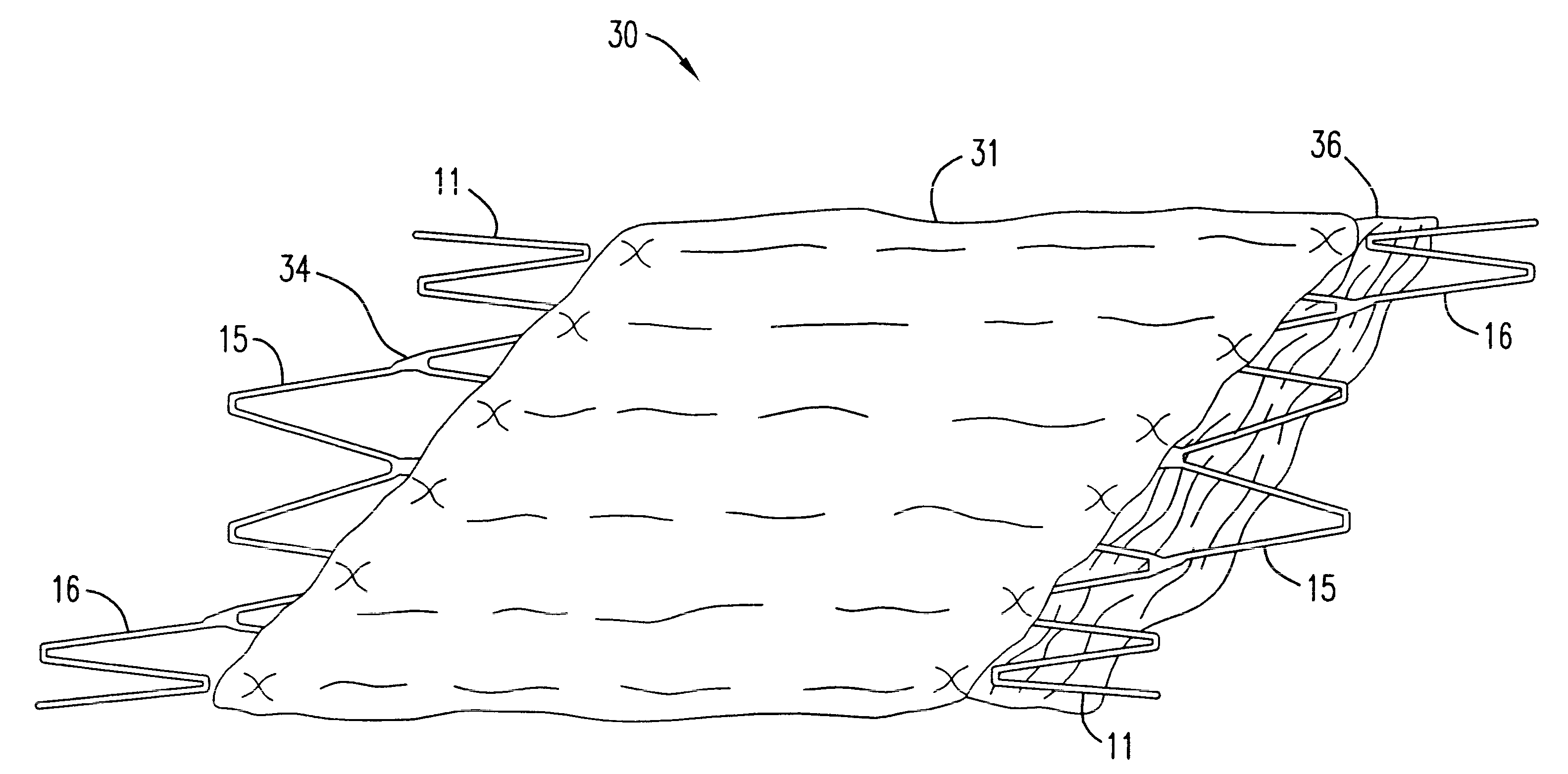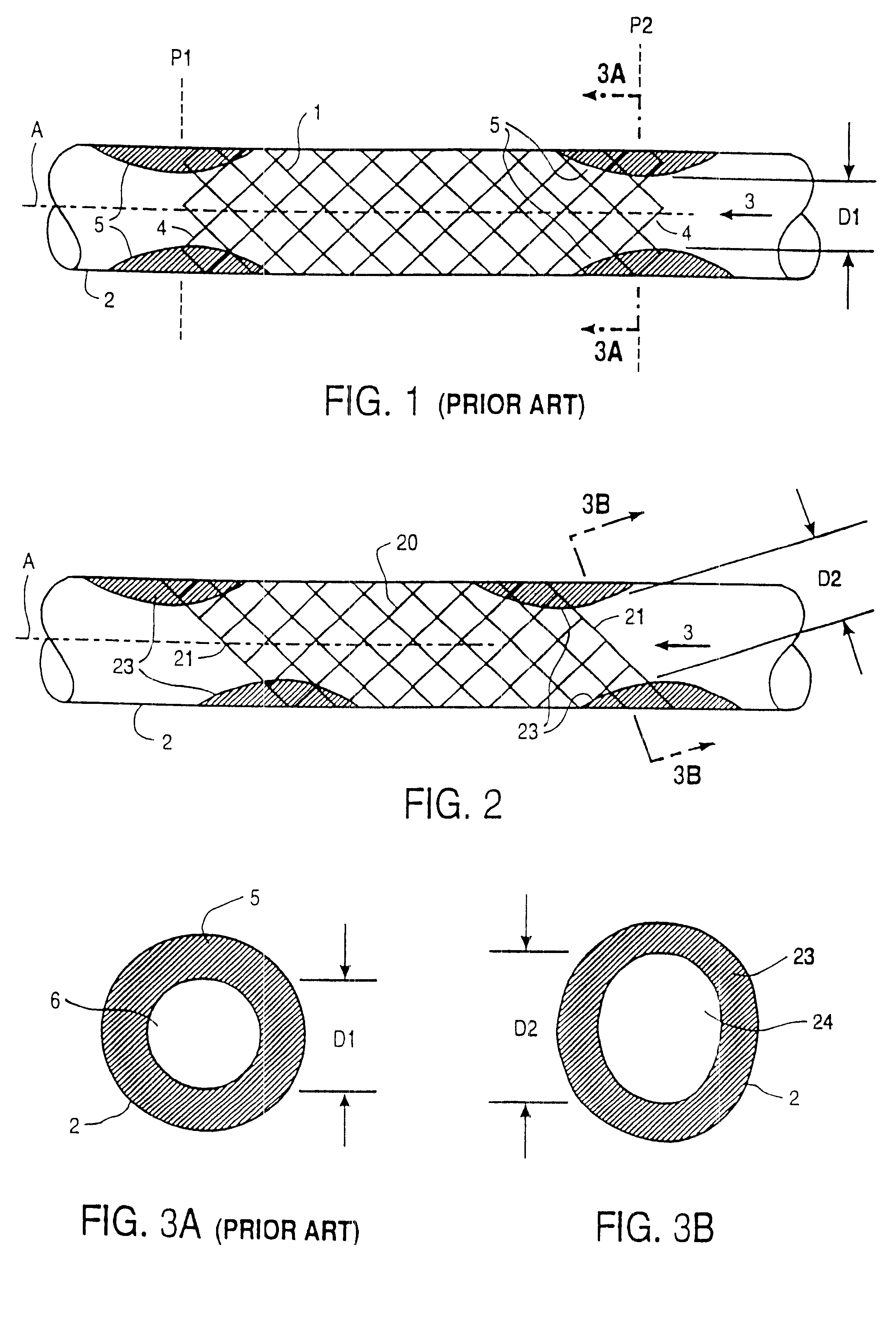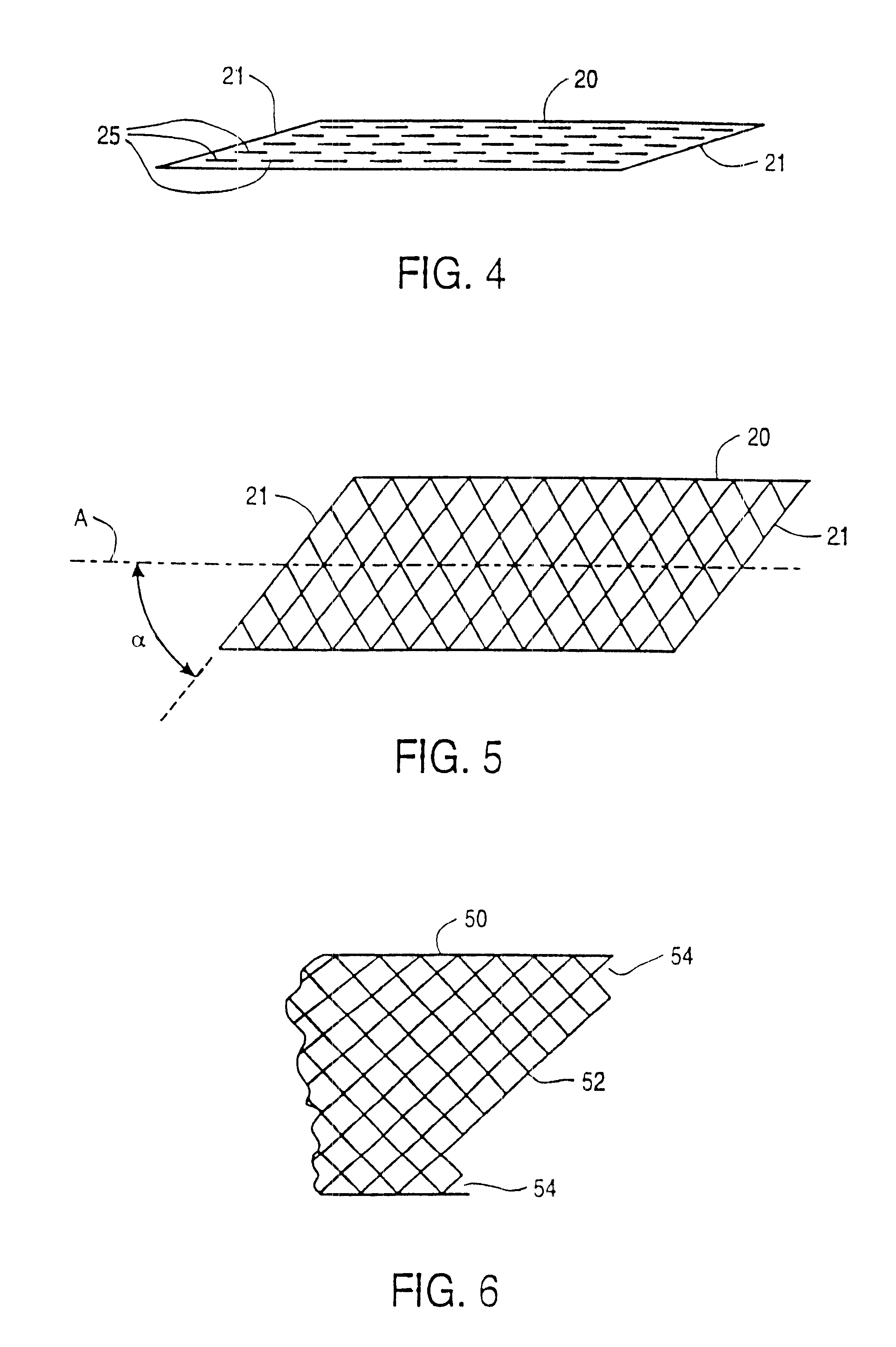Tubular endoluminar prosthesis having oblique ends
- Summary
- Abstract
- Description
- Claims
- Application Information
AI Technical Summary
Benefits of technology
Problems solved by technology
Method used
Image
Examples
Embodiment Construction
The present invention provides intraluminal tubular prostheses and methods for their use. The prostheses of the present invention are particularly suitable for use within the vascular system for treatment of aneurysms, stenosis, and other vascular conditions, but are also useful in other body lumens, such as ureter, urethra, biliary tract, gastrointestinal tract, and the like, for the treatment of other conditions which benefit from the introduction of a reinforcing or protective structure in the lumen. The apparatus and methods can also find use in the creation of artificial lumens through solid tissue and structures, such as the placement of a TE fistula via an endoscope. The vascular prostheses will be placed endovascularly. As used herein, "endovascularly" will mean placement by percutaneous or cutdown transluminal procedures (at a location remote from the treatment site) using a catheter. Use of a guidewire and / or guide catheter under fluoroscopic guidance may facilitate placem...
PUM
 Login to View More
Login to View More Abstract
Description
Claims
Application Information
 Login to View More
Login to View More - R&D
- Intellectual Property
- Life Sciences
- Materials
- Tech Scout
- Unparalleled Data Quality
- Higher Quality Content
- 60% Fewer Hallucinations
Browse by: Latest US Patents, China's latest patents, Technical Efficacy Thesaurus, Application Domain, Technology Topic, Popular Technical Reports.
© 2025 PatSnap. All rights reserved.Legal|Privacy policy|Modern Slavery Act Transparency Statement|Sitemap|About US| Contact US: help@patsnap.com



